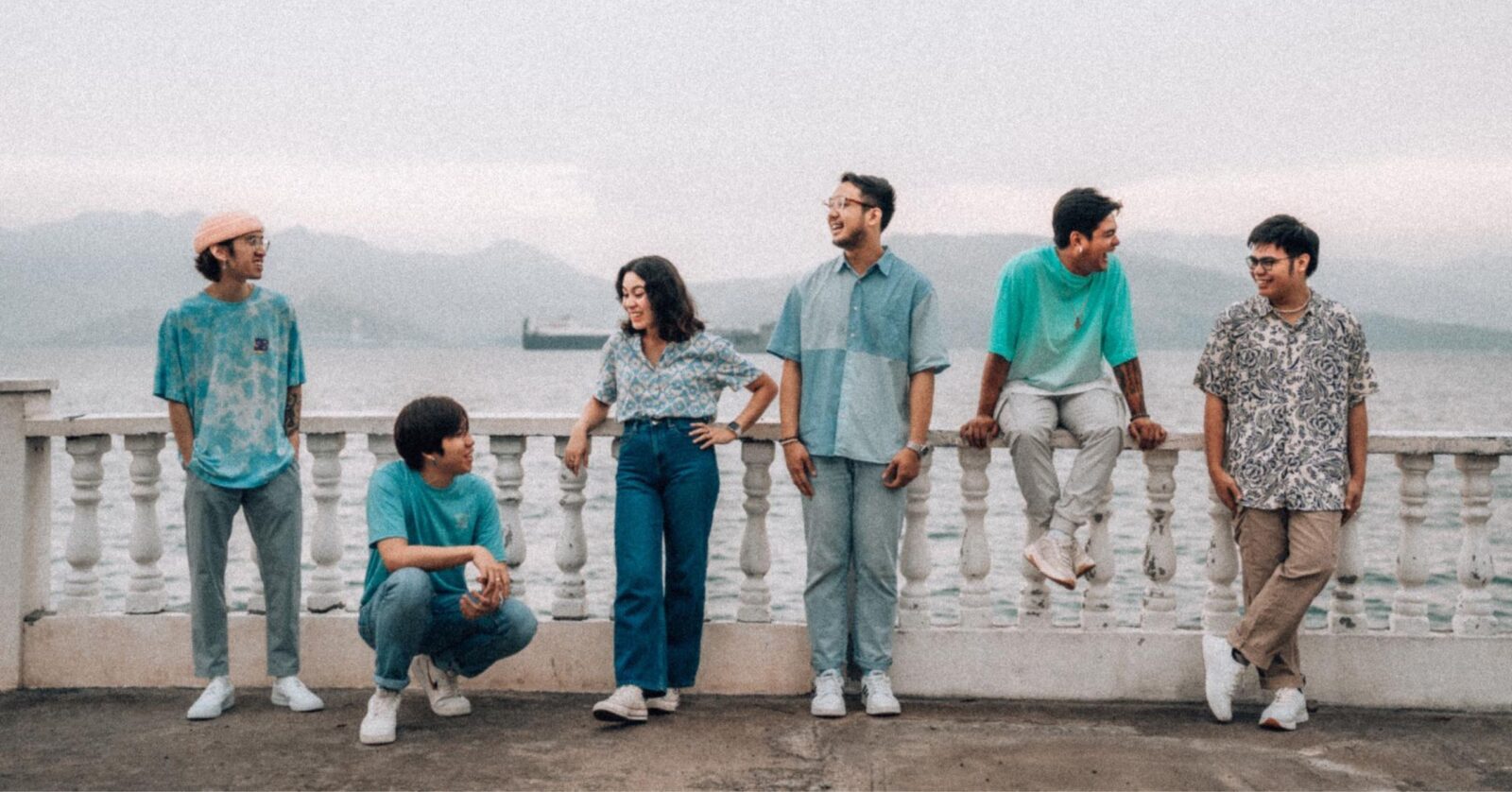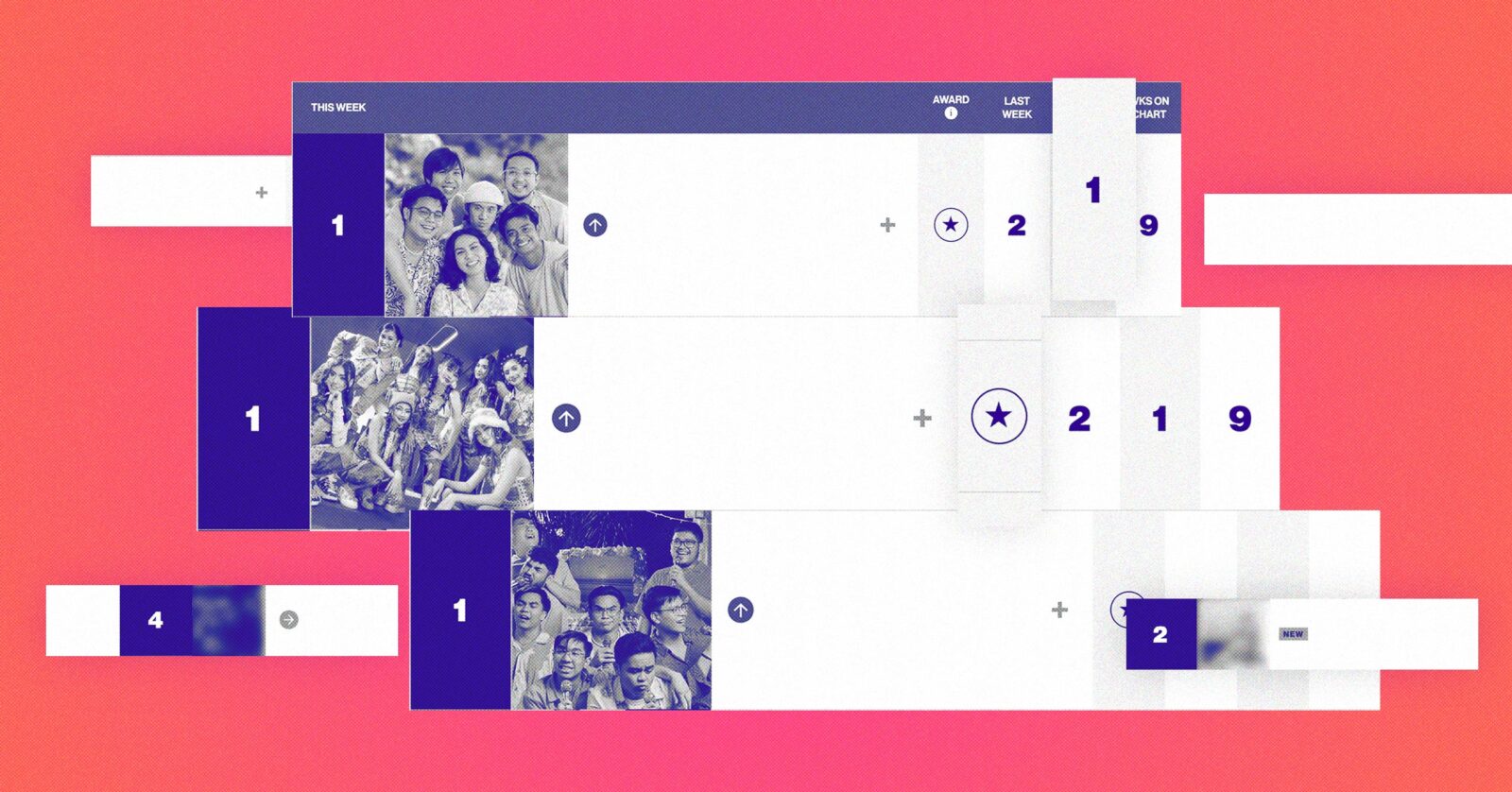What exactly makes up a hit song? More specifically, what enables it become a chart-topper, especially in the Philippines?
Undoubtedly, having a track take the top spot on a major music chart is a goal that many, if not all, artists — and by extension, their fans — dream of achieving. After all, it is a concrete metric of success for any music artist who attains this feat. It serves as a measured indicator that a particular piece they created is capable of becoming a clear-cut favorite above other strong music releases.
How charts work
In order to understand how a song achieves the status of a chart-topping hit, one must first understand how charts like the Billboard Hot 100 and Billboard 200 work.
In an article on Billboard Philippines about the present-day relevance of music charts, we explained how charts make use of complex algorithms in order to “provide an accurate reflection of a song’s popularity across different consumption methods.” These charts compile data taken from different sources, including “physical sales, digital downloads, and streaming platforms.”
As those algorithms check and compile all available data across these sources, it ultimately comes down to the final numbers within a certain time frame that each chart is assigned to monitor. Whether it be on a daily or weekly basis, these charts will display which songs are the most popular or “hot” after a specific time or date, ranking them accordingly and thereby resulting in obvious chart-toppers. In other words, the songs with the most streams, sales, and/or downloads within a certain week, become the chart-toppers for that week.
How social media makes a difference
The makings of a hit song vary, but common ones include memorable and catchy melodies, relatable lyrics, familiarity in the themes or subject matter, and quality production. These elements are undeniably important in laying the groundwork for potential chart-toppers.
In the present landscape of music and the process of its promotion, there emerged a relatively new factor that, when utilized correctly and with the right timing, can capitalize on the potential of songs that possess these certain elements — the power of social media.
In this day and age, the role of social media in promoting artists and their music is crucial, if not necessary, to have a shot at success. Now, more than ever, platforms like Instagram and TikTok, and their individual algorithms are geared towards helping artists more than just simply getting their music out there —it can also help them take matters into their own hands, building further reach and cultivating stronger relations with fans.
Three hits, three artists
Today, Billboard Philippines looks back on how social media and, by extension, virality, played a role on how three Filipino artists and their respective songs — Lola Amour’ with “Raining In Manila”, SunKissed Lola with “Pasilyo” [“Aisle”], and BINI with “Pantropiko” [“Tropical”] — became hits and topped the charts. This, while also keeping in mind the common factors of a hit song that they inherently possess.
Before they eventually blew up, the aforementioned three tracks already showed the qualities of a hit song, with certain elements helping them stand out in particular. However, how exactly has social media propelled these songs to the next level? How did they become the chart-topping hits that have taken over countless playlists, become millions of Filipinos’ go-to tracks, and dominated multiple channels across our country?
The combined power of familiarity and (a lot of) memes
With any song, it’s easy for a sense of familiarity with its chosen theme to draw people closer. Familiarity provides a somewhat clear reality for the listener to latch onto — something that they can easily connect with through their own experiences, especially in their day-to-day lives. It helps listeners easily resonate with a track, fully transporting them into whatever world or scenario a song wishes to establish.
“Raining In Manila” by Lola Amour is a perfect example of this, naturally capitalizing on two things Filipinos can easily resonate with: our volatile rainy weather that Filipinos of all ages across the country have grown accustomed to, and loved ones migrating to foreign countries.

Courtesy of Warner Music Philippines
Our country’s notoriously chaotic wet season has been the subject of memes online for some time now, from certain schools being prone to flooding to terribly slow class suspensions. Lola Amour was bound to provide the fitting score for this staple topic of Filipino meme culture, helping them achieve viral status through some good old humor.
“[The rain] gave us [the] opportunity to get so many memes out there so people could instantly relate, even if they didn’t understand the song yet,” notes Lola Amour frontman Pio Dumayas in an interview with Billboard Philippines. “That was the first wave. When the song came out, the first thing that gave us exposure or reach were the memes that people were sharing in relation to it, [like] baha sa España at may nag-je-jet ski sa University of Santo Tomas [like it’s flooding in España and someone was jet skiing at the University of Santo Tomas],” he adds.
Besides this, family or friends moving away to work or live in other countries is also another common reality Filipinos are familiar with, especially those having loved ones who are overseas Filipino workers or OFWs.
Dumayas also shares how, by looking at their data, one can see which countries the band have a following outside of the Philippines. This includes the likes of Australia, Dubai, the US, Singapore and more — places Dumayas describes as “where you’re sure you have a friend who migrated there.”
Combining these two insights into one irresistibly catchy track, “Raining In Manila” took off, peaking at No. 2 on the Billboard Philippines Songs chart and No. 1 on Spotify Philippines‘ Top 50 chart, while also becoming the most streamed song in the Philippines during that period.
Relatability (and true love) never gets old
Relatability to a song’s lyrics often helps us connect with it on a more personal level, breathing new life into a track and giving it a whole other meaning for ourselves. It can tell us that a track reflects our innermost thoughts, our deepest feelings, or even emotions we’re struggling to contain or comprehend. Relatability indicates that a certain song is speaking to us, perhaps, in more ways than one, even if the subject matter is something we’ve constantly heard of time and time again.
Love is one of these themes, as it has undeniably been a favorite topic of Filipinos when it comes to music since the dawn of history. Through the years, we’ve constantly sung about love in all its forms, even its bittersweet side. Ultimately, however, the desire for true love is what many Filipinos greatly resonate with the most, no matter how many times we sing of it. It shows how integral love can be in our lives — not just personally, but culturally as well.

SunKissed Lola: courtesy of @sunkissedlolaband
Every now and then, we encounter a song that perfectly captures this universal desire for true love, and it just sticks better than most. One such song is SunKissed Lola’s “Pasilyo,” which paints a vivid and profound image of the ubiquitous hope of someday getting married to a certain special someone and becoming their one and only. Coupled with a musical backdrop of waltz- and kundiman-infused rock, the song struck a particular chord with millions of Filipinos online, demonstrating just how deeply people could personally relate to the song’s message and story. “Pasilyo” gained major traction on platforms like TikTok, spawning tons of vocal and instrumental covers, and the like.
Alongside this, countless “fan edits” also immensely helped add to the song’s viral attention. For the unaware, fan edits are typically short videos with dramatically edited scenes featuring certain pairings of characters from various media, or even real-life celebrities. These scenes are set to selected tracks whose lyrics and instrumentation evoke the emotions that the content creator wishes to convey between their chosen pair. With its earnest proclamation of dedication to a lover, “Pasilyo” became the perfect choice of thousands of users for crafting such videos.
Ultimately, this led to a major milestone in SunKissed Lola’s journey. In March 2023, the indie act earned the honorable distinction of becoming the first Filipino band to reach No. 1 on the Billboard Philippines Songs chart.
While relatability is a rather obvious element for a song to potentially become a hit, SunKissed Lola’s success with “Pasilyo” is a reminder that its overall importance and role is something that should never be underestimated, especially in this age of social media.
Everybody likes a catchy melody (and dancing)
With music, there’s no denying how the instrumentals play a major role in reeling listeners in, especially when a song has an absolutely catchy melody. These melodies make songs extra memorable, being tasked with planting the best first impressions onto the minds of every listener that comes across them.
Melody is often the main reason why we keep coming back to certain songs, having them on repeat to no end. They’re the parts we constantly hum and often what we use to immediately identify a song with just a few notes. The catchiest of melodies make us want to move along to a song in whatever way we can — even to the point of dancing.

Courtesy of Star Music
With the recent rise of such platforms as TikTok and Instagram Reels, countless dance videos or so-called “challenges” have become a staple of our social media experience. These videos encourage everyone to learn the steps to certain songs, with people of all ages and backgrounds joining in. Because of this, it has also become a useful tool in promoting one’s music, helping certain songs reach people from all walks of life through the interactive experience that these dance challenge videos offer.
With the popularity of this type of online content, a lot of songs would now have a specific choreography attached to them. Unsurprisingly, the most well-known ones come from music by idol groups — a particular hit of note being “Pantropiko” by the P-pop group BINI.
With tasteful hints of Latin and Caribbean music, “Pantropiko” is a colorful, modern pop song containing a melody that is as equally catchy as it is memorable. Combining this with its own unique and easy-to-follow dance moves, it became a recipe for success for the eight-member girl group, with the song eventually becoming viral and propelling them into the mainstream in no time. Soon enough, BINI became the first P-Pop group to top Billboard’s Philippines Songs chart in late April of this year.
In an interview with Billboard Philippines, BINI’s leader Jhoanna credits their youngest member Sheena for crafting the song’s now-viral dance moves. “Actually, we’re so, so proud of Sheena kasi [because] she’s the one who choreographed the dance,” she proclaims, adding, “A huge part of why the song got viral is because of the dance, so we’re so fortunate to have her as part of our group.”
Even today, dance covers and challenges of “Pantropiko” continue to populate social media feeds, done by BINI’s fans, curious listeners, and even celebrities here and abroad. Ultimately, the dance moves that come with such songs tap into people’s inherent desire to move along and vibe to the music they love. When dancing to the music becomes an interactive online activity that encourages this very desire, it’s only a matter of time before more and more people join in on the fun.
All in all, these three tracks share the necessary qualities of a hit song, which have enabled them to enter the radar of countless listeners — and with a little push from social media, these songs have helped their artists reach milestones that they only previously dreamed of.
From this, we learn that utilizing every platform available to the fullest can elevate artists to the greatest of musical heights. From replying to comments to consistently uploading various Instagram Reels or TikTok videos, no online gesture is too little or too much for an artist to properly and organically grow their audience, using the tools and potential reach already provided by social media.
Of course, the music should always come first. But now, more than ever, with these artists serving as concrete evidence, the power of social media cannot be disregarded. Instead, as the current landscape of music promotion continues to change, it has become necessary for artists to go further and evolve. It’s now or never.
